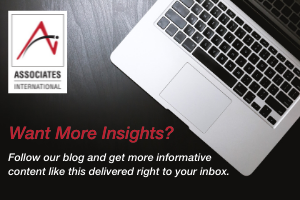When you hear the phrase “multi-channel marketing automation,” what’s the first channel that comes to mind? Email, right?
While email is a key component of multi-channel marketing campaigns, there is so much more to automating your marketing than triggered email blasts. In this post, we’ll cover what you should be considering when developing automated multi-channel marketing campaigns.
Why automate?
Today’s consumers and B2B decision-makers receive numerous marketing messages daily, and the chances of an email breaking through the clutter is growing increasingly slim.
That’s why integrating multiple channels — including email — works. Automating with behavior-driven triggers delivers your brand’s message consistently, while providing opportunities for your audience to engage with your brand how they want, when they want.
Here’s an example. You work for an online retailer with several brick and mortar storefronts. Each month, you send customers an email with a downloadable monthly coupon. This month, Customer A opens the email but doesn’t download the coupon.
With automation in place, this behavior triggers a printed coupon to be mailed to Customer A, who then uses the trackable coupon on your online store.
Meanwhile, Customer B downloads the coupon and walks into one of your stores and uses it.
You now have better insight into how these customers may prefer to receive and use coupons. In the following months, you can use A/B Testing with these customers to determine if their preferences are consistent.
Automating your multi-channel campaign not only helped generate two sales, it also provided valuable data about these customers’ preferences. Scale this data across an entire customer base, and you could save significant time and resources distributing your monthly coupons.
At the same time, you are continuing to nurture leads towards a sale.
Identify tactics, content and channels
Your print and digital tactics serve as drivers to communicate with audiences using automation. Examples include print and triggered direct mail pieces, emails, social media engagement, eGuides and blog content.
Any outbound content that is targeted to a specific person should be personalized. Personalized content is a key component of multi-channel marketing, enabling you to appeal to specific pain points, wants and needs with your products or services.
Finally, map out your channel strategy and triggers, allowing audience behavior to guide their next step in the buyer journey. Our eGuide, Multi-Channel Marketing Automation Made Simple, shows one of our recent multi-channel campaign workflows and best practices.
Determine who is managing your campaigns
Multi-channel marketing automation is designed to reduce the day-to-day management of your campaigns. However, digital assets and print pieces will still need to be created, messaging must be crafted for each step in the buyer journey, and the campaign workflow itself requires step-by-step instruction and setup.
Take note of what you can and cannot execute internally for a smooth campaign activation. If you and your team don’t have the time or resources to create or manage these components, consider leaning on a print and digital communications provider to handle the setup and execution.
There is no one way to approach building your automated campaign. We’ve consulted with clients whose scope of work and company size have widely varied.
In some cases, clients only needed us to print and distribute their direct mail pieces and send emails on their behalf.
Others needed full-service automation, with triggered workflows that we set up and managed for them. The key to their success was finding the right mix of internal and external resources to run their campaigns effectively.
CONTACT US – Speak with a Marketing Implementation Solutions expert.
Comments are closed.


